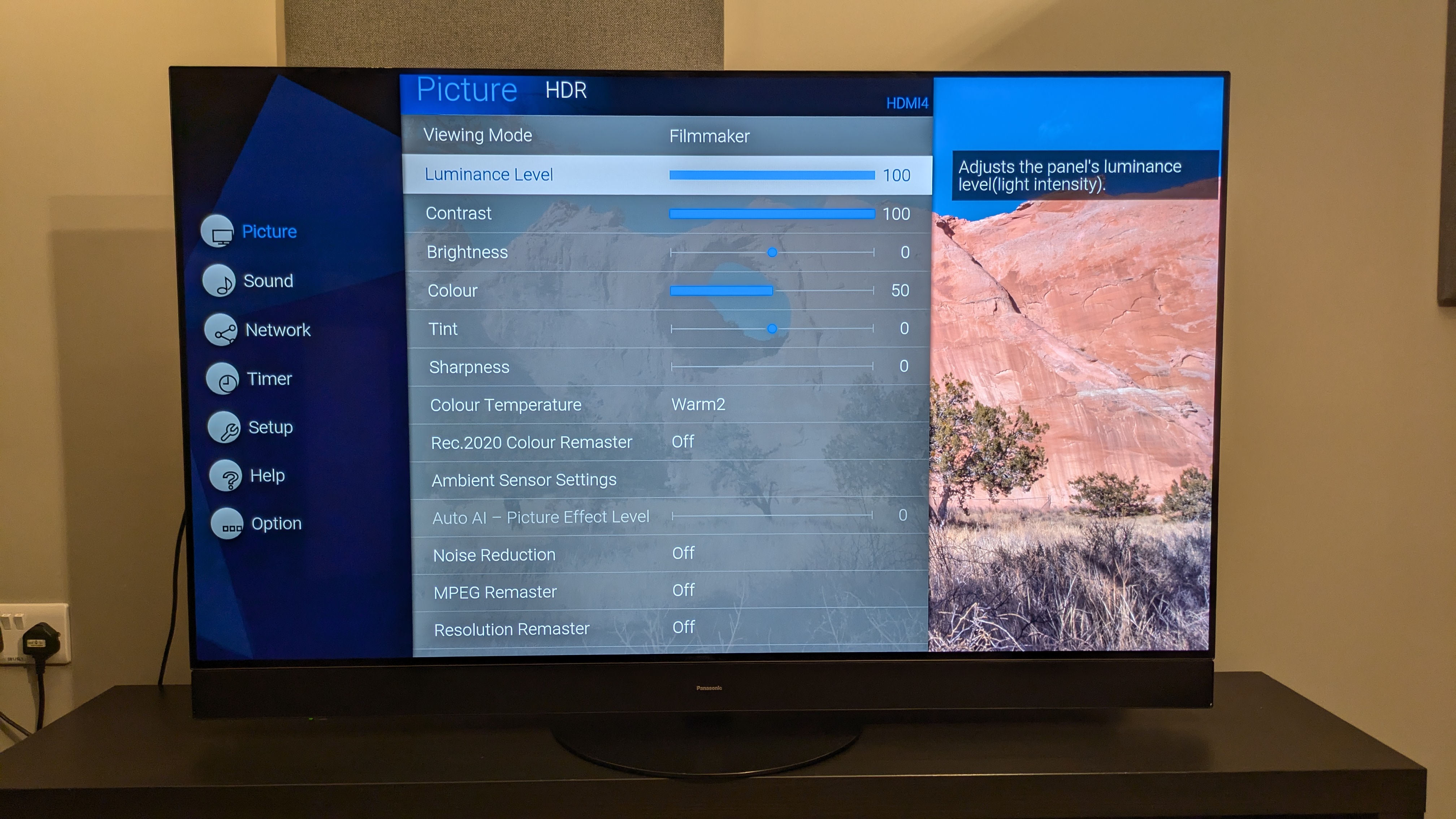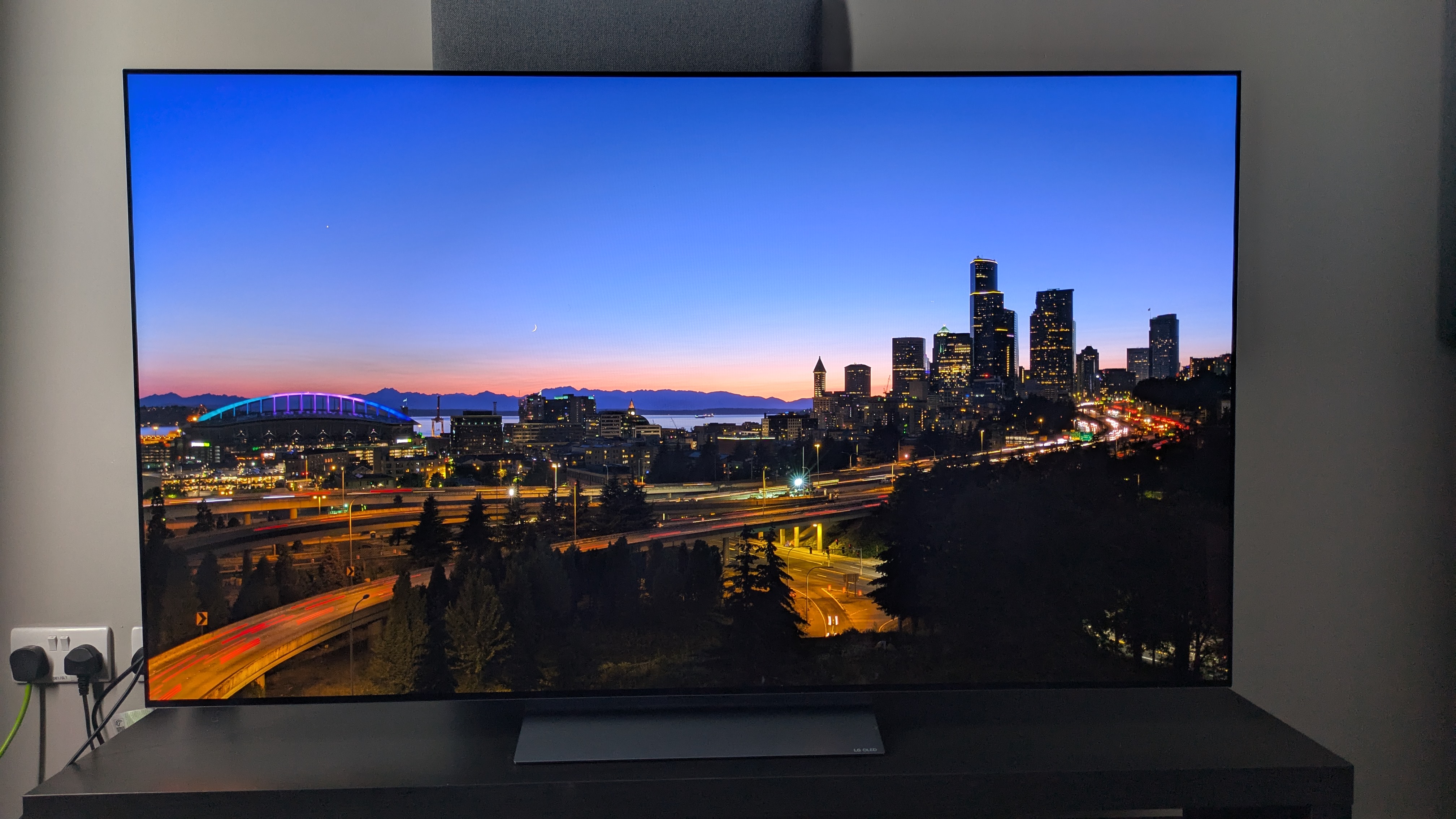Filmmaker Mode on TVs is getting a much-needed update that highlights the problem it had in the first place
The UHD Alliance is going to fix Filmmaker Mode's biggest flaw

- Filmmaker Mode 1.1 includes ambient light compensation
- It will have zero effect in very dark rooms
- It'll deliver brighter images without ruining accuracy
Filmmaker Mode is getting a much-needed upgrade that solves a key problem with the TV's picture purity setting: for many of us, it's just too dark.
As much as I love the idea of Filmmaker Mode – delivering movies exactly as their makers intended – there is one teeny-tiny problem with that, which is that I, and many of the readers who've been in touch with us about Filmmaker Mode on their TVs, don't watch our TVs in a movie theater.
And that means Filmmaker Mode makes many movies so dark that I might as well have the screen turned off if it's a bright day.
Filmmaker Mode 1.1, which has been introduced by the UHD Alliance, fixes that.
The 1.1 version uses your TV's ambient light sensor to adjust the brightness based on the ambient light in your room.
That doesn't mean your classic movie collection is suddenly going to look like you've enabled your TV's retail mode to make everything brighter than everything else. But for those of us who can't watch movies in complete darkness it'll enable us to get the benefits of Filmmaker Mode without the eye strain.

Picture processing isn't the enemy
We use Filmmaker Mode when we test TVs because it's usually the most accurate mode. But it's not always the most useful mode for everyday viewing, because in its quest for cinematic purity it turns a bunch of processing features off. And one of those features is your TV's ambient light compensation.
Sign up for breaking news, reviews, opinion, top tech deals, and more.
Image processing gets a bit of a bad rep, but the problem isn't that image processing is bad; it's that bad image processing is bad. We've all experienced the faintly nightmarish crispness of faces from overly aggressive picture processing, especially when upsampling lower-res visuals. But used judiciously, picture processing can and does make things better.
A good example of that is motion handling. Too much of it is horrible, especially in movies. But you need a little bit on today's bright TVs or you get panning judder, which is something that ruins movies and TV shows for me and which the smart Authentic Motion tech feature of Dolby Vision 2 Max is in part designed to address.
It's the same with light compensation. If you're in the kind of viewing room Martin Scorsese watches movies in, then dark is great: there's virtually no ambient light in those rooms, which were designed specifically for showing movies. But in most cases your room wasn't: it's just a normal room with windows and drapes or blinds and light coming from various places.
If you're in Marty's movie reference room, this change to Filmmaker Mode won't make any difference to your experience: the ambient sensor won't detect sufficient ambient light to turn on any picture processing.
But if you're in a normal room and your TV has Ambient Filmmaker Mode – which is already in TVs such as the LG C5 and LG G5 OLED TVs – then the algorithm will adjust the picture so you can see it: not the colors or the color temperature, just the luminance of the picture. FlatpanelsHD has a handy guide to how the algorithm works as well as the edge cases where it might not be so effective.
I think this is a welcome development. It won't ruin things for the serious cinephiles in their reference rooms, and it'll improve things for those of us with more modest movie-watching setups. Expect to see the new Filmmaker Mode in more TVs through 2025 and beyond – we'll keep an eye out for any news of it coming to specific existing models.

➡️ Read our full guide to the best TVs
1. Best overall:
LG C5
2. Best under 1000:
US: Hisense U8QG
UK: TCL C7K
3. Best under 500:
US: Roku Plus Series
UK: Amazon Fire TV Omni QLED
Follow TechRadar on Google News and add us as a preferred source to get our expert news, reviews, and opinion in your feeds. Make sure to click the Follow button!
And of course you can also follow TechRadar on TikTok for news, reviews, unboxings in video form, and get regular updates from us on WhatsApp too.
You might also like

Contributor
Writer, broadcaster, musician and kitchen gadget obsessive Carrie Marshall has been writing about tech since 1998, contributing sage advice and odd opinions to all kinds of magazines and websites as well as writing more than twenty books. Her latest, a love letter to music titled Small Town Joy, is on sale now. She is the singer in spectacularly obscure Glaswegian rock band Unquiet Mind.
You must confirm your public display name before commenting
Please logout and then login again, you will then be prompted to enter your display name.